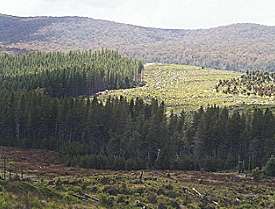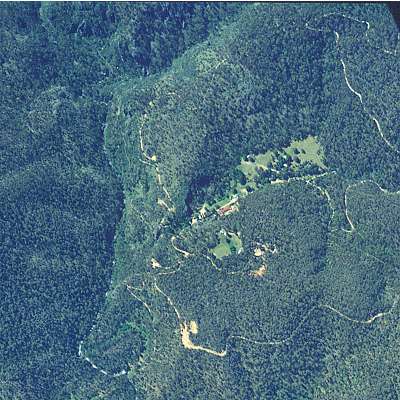|
Ecosystems at Risk: Limestone
caves
7a. Human Impacts: Catchments
Minor disturbances to catchments and the caves themselves can have large
negative impacts on cave ecosystems.
 |
A pine plantation was planted in
the limestone catchment of Yarrangobilly Caves. It was discovered
that the pine trees use 17% more moisture than the native eucalypt
woodland it replaced resulting in less water entering the caves
which dried out. Once the cave formations dry out the deposition
of calcite stops and the formations stop growing. The pine plantation
shown here is being removed and the area replanted with the
original plant species.
Agricultural activities in karst catchments contribute eroded
soil, pesticides, herbicides, animal wastes and bacterial loads
to cave streams. Pollution from major roads can be a problem
with vehicle accidents and the general wash of pollutants from
the road. The Snowy Mountains Highway passes through the Yarrangobilly
catchment. |
|
 |
The vertical air photo shows the catchment and area immediately
around the Yarrangobilly Caves. There are many of wild caves in
the area but the photo shows that area where caves are open to the
general public with the infrastructure required for this. Note the
changes to the catchment of vegetation clearing, gravel access roads,
and various buildings.
Source: © Land and Property Information
Panorama Avenue Bathurst 2795
|
|
|
|